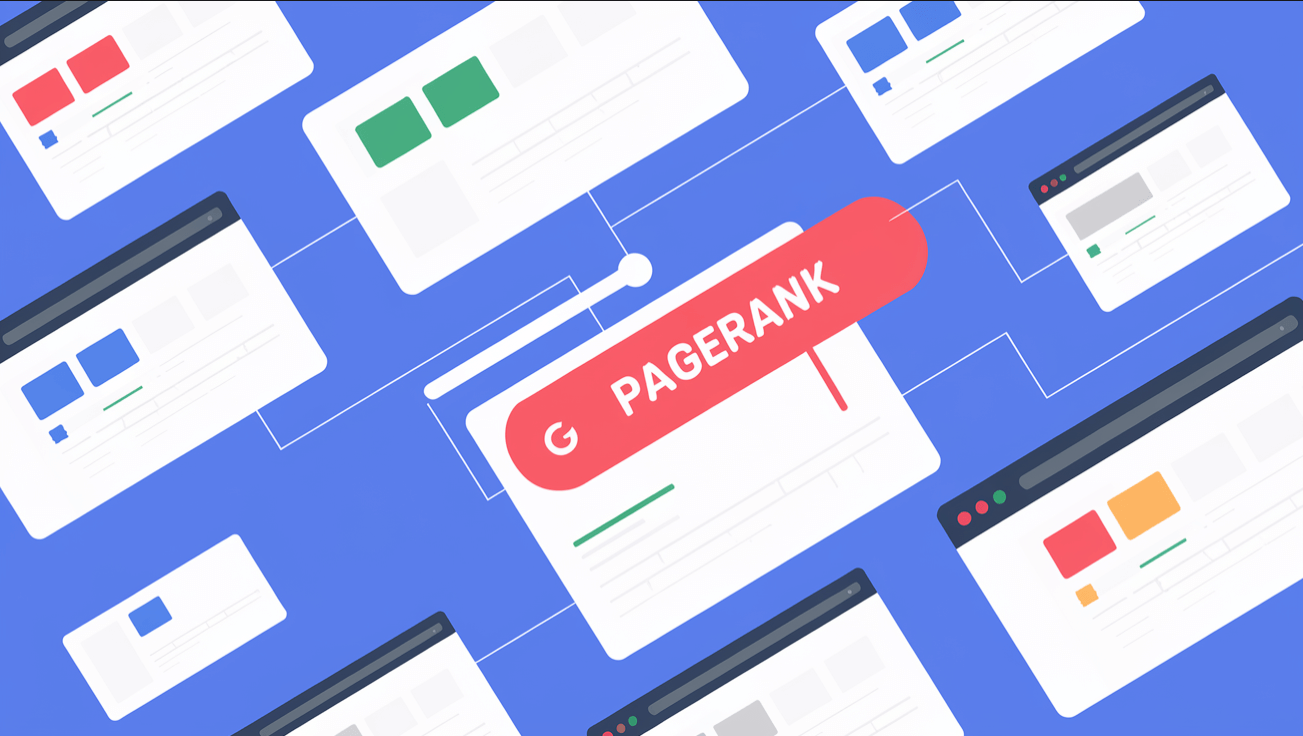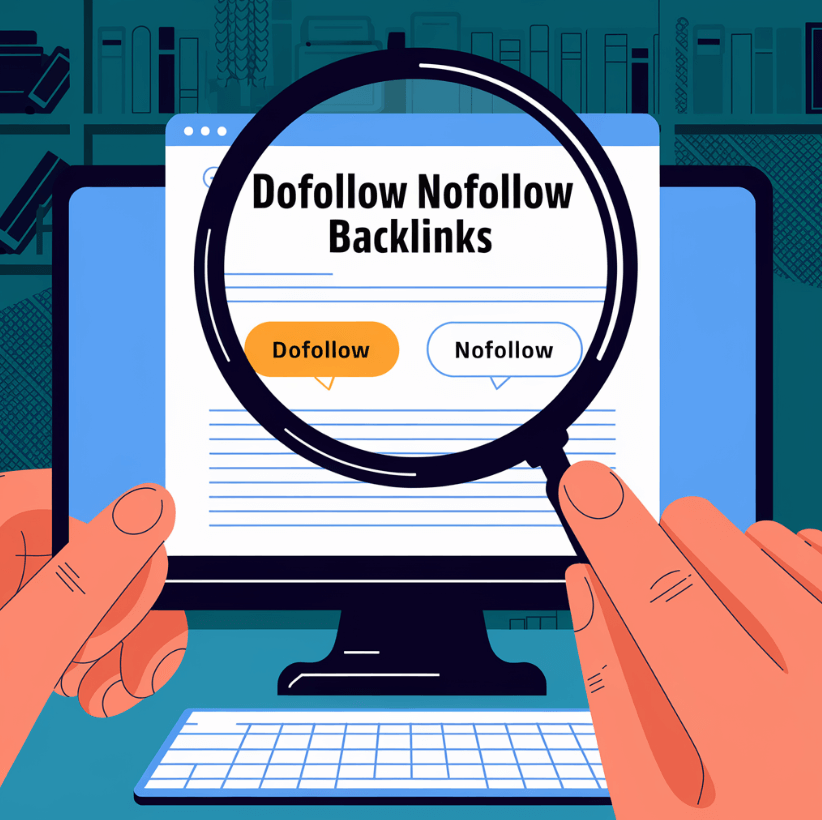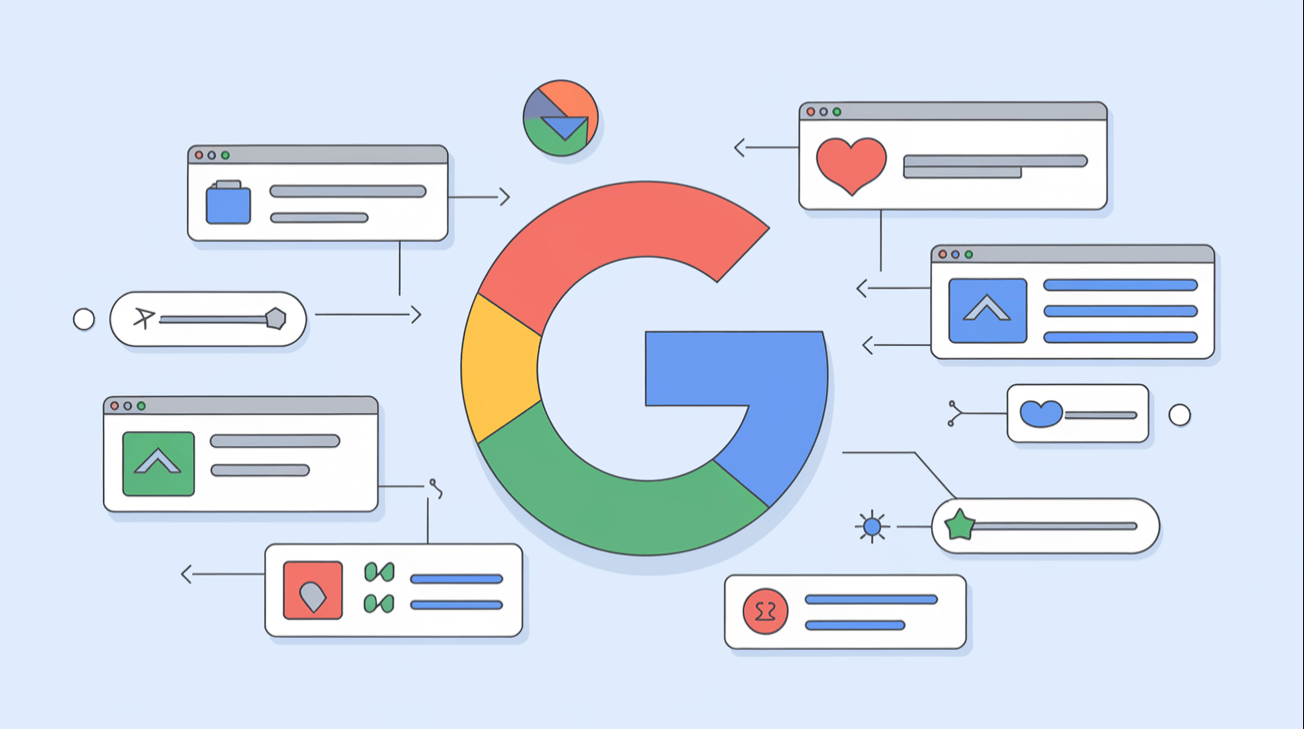What is link building?
Link building aims to create a network of links pointing to a web page in order to boost traffic and strengthen your website's authority.
This network shows Google how popular a website is, based on the quality of the referring sources.
The more backlinks a site has from other reliable and relevant web pages, the more search engines consider it authoritative in its field.
However, link building also includes internal linking - links within your own website.
Why are links so important?
The web can be defined as a set of interconnected documents that form a network. Links create these connections and enable users to navigate between pages, websites, images, videos, and files.
Search engines rely on this structure to crawl, index, and rank content.
At the early days, search engines just organized web pages alphabetically or by category (arts, sports, news, etc.). You had to manually register your site to appear in these indexes.
When the web was small, this system worked well. But as the web grew, search engines had to improve their algorithms to continue delivering the best possible results.
That's when Google entered the scene, introducing an algorithm that revolutionised search: PageRank.

Google's PageRank considered several factors to rank websites:
- The content of the page, based on its keywords
- The popularity of the page, measured by its link network
But it quickly became clear that wasn't enough. Google then began to factor in the diversity and quality of the pages providing backlinks.
How does Google evaluate links?
Google's algorithm uses many factors to evaluate the backlinks pointing to web pages. Here are some of the key criteria:
1. Number of links
First of all, the more links a website receives, the more qualitative it's considered to be.
But there's no point in receiving lots of links if they're not reliable and relevant.
2. Link diversity
For Google, a website gains higher authority when it receives backlinks from a variety of sectors. That's why link diversity is an important factor in Google's evaluation.
3. Link context
Google is now capable of understanding the context in which a link appears to determine its relevance. This includes:
- the words around the like,
- the overall theme of the content,
- the nature and position of nearby links.
When a backlink is placed within the main content of a page - especially at the beginning of a paragraph - it's often seen as more editorial and intentional, which gives it greater value in Google's eyes.
However, links placed in the header, or footer are often seen as structural or less relevant.
4. Anchor text
Anchor text - that is to say, the clickable part of the link - says a lot about the page it points to. ⚓
In general, a good anchor text contains a keyword or a brief description of what users will find on the landing page.
Moreover, analyzing anchor texts helps detect manipulative SEO practices. For example, if the exact same anchor text is used across all backlinks, Google may consider it unnatural. When backlinks are natural, anchor texts tend to be diverse.
5. Reliability
TrustRank is an evolution of Google's algorithm that focuses on evaluating the trustworthiness of a website to determine its ranking. 🔒
To assess this criterion, the algorithm takes into account several factors, including:
- domain age,
- the presence of security certificates,
- the quality of the content...
6. Links from other websites to your website
In link building, you can work with both internal and external links. However, it's important to understand which type carries the most weight in Google's ranking. ⚖️
What others say about you is more valuable - this is why backlinks tend to carry more weight.
7. Links from your website to your pages
The links inserted on your website are less important, but they allow Google to understand your page hierarchy.
8. Links from your website to other pages on the web
Internal links that lead to external websites are also important. Google evaluates whether you refer to popular, reliable and expert websites. 👨🎓
9. Link acquisition speed
At first, backlink generation was one of the methods used to manipulate search engines.
Many websites created link farms or used backlink buying/resalling systems to rank high quickly.
To counter this, Google has strenghthened its algorithm to identify and penalize such methods. The speed at which your website gains links is one of the criteria used.
Getting many links on a short period can reflect a fraudulent practice, as natural link building develops progressively.
10. Nofollow vs dofollow
Another factor evaluated by Google during link analysis is the nofollow attribute.
When it is placed in the link code, the crawler knows not to take the linked page into account for ranking.

This means that these links don't convey link juice.
For example, if you mention a suspicious website, you can use the nofollow tag to avoid sharing your authority with it.
How to create links? The 4 main netlinking strategies
In general, the most popular link building strategies fall into one of these 4 categories:
1. Inserting links
This consists of going to a website that doesn't belong to you and inserting your link manually.
The most popular methods are:
- creating social profiles,
- submitting to business directories,
- registering on review websites,
- posting on forums or FAQ websites.
It's very easy to create links this way. That's why these links have little or no value in Google's eyes.
Moreover, this type of link offers limited competitive advantage - if you can go to a website and insert your link manually, your competitors can do it too.
However, they shouldn't be completely ignored, as they are considered "basic links". In general, Google includes them in its knowledge graph: today, they are seen as a signal by search engines.

2. Asking for links
This consists of asking other website owners for a link. This is called "link prospecting".
You should target websites that are thematically related to your page. Ideally, webmasters (or bloggers) will be impressed by your content and want to share it with their audience through a backlink.
But not all your website pages are masterpieces. That's why professionals have developed strategies to convince site owners to insert links:
-
Guest posting: Write a high-quality article for their website and include a link to your website.
-
Skycraper method: Find an outdated (or low-quality) page with many backlinks. Create a better version on your blog, then reach out to all the sites linking to the old one. 🏙️
-
Resource page outreach: Find pages that list useful resources like yours, and ask to be mentioned.
-
Link reclamation: Find a dead (404) page with many backlinks. Recreate the content on your site and notify the referring websites.
-
Image link recovery: Find websites that used your images without authorization, and ask them to credit you with a backlink.
-
Expert quotes for journalists: Offer a professional quote for inclusion in relevant articles.
-
Brand mentions: Ask sites that mention your brand to turn the mention into a clickable link.
-
Press relations: Offer an interesting story for journalists to cover.
3. Buying links
It's the easiest way to create links. Many website owners will do it if you pay them.
However, paying (or offering anything in exchange) for links is risky. Google considers it a manipulation of its algorithm and may penalize you by removing your website from search results.
Another risk tied to this practice is wasting money on poor-quality links that bring no results. 💸
4. Getting links
This situation occurs when other people create links to your website without you needing to ask them.
Here are a few elements that can make your website remarkable:
- Exclusive company data,
- Results from long-term experiences or studies
- Unique ideas or strong opinions
- Sector surveys
- Newsworthy content
There's nothing like a blog to earn natural backlinks!
To create your blog quickly, don't hesitate to use SiteW! 😉 Our
website builder allows you to build your website in a few minutes thanks to our intuitive tools. 🖱️✨
Create a blog with SiteW
13 effective link building strategies
To implement link building strategies, it's important to take into account Google's link evaluation factors.
Here are the main methods to do so:
1. Create digital marketing assets
Content marketing is essential for netlinking. Before getting links, you must ensure that users will like what they find on your website.
Try to create high-shareable publications: this refers to good and relevant content that is spontaneously shared by the audience.
Here are a few examples:
- infographics,
-
interactive content, such as quizzes, online calculators, and tests,
- articles with lists,
- comprehensive guides,
- studies.
There are just a few examples of content that are easy to understand, attractive, and offer new and original data.
👆 Whatever format you choose, remember that quality is the first rule.
2. Look for partners
If you maintain strong relationships with other websites, it will encourage them to create links to your content.
The best partners are websites that search engines trust, with authority in your sector, and quality content related to your field of expertise.
In general, these websites are already ranking high on Google, and you can use the following tools to discover them: Domain Authority (DA) or Domain Rating (DR) indicators from Moz or Ahrefs.
These indicators mimic how Google's algorithm works by giving an authority score to websites. It ranges from 0 to 100 and indicates the likelihood that a website or domain will rank in the top search results. The higher the score, the better.
When you find interesting partners, start with a friendly and discreet approach. Gradually show your interest in a partnership by offering to help solve a problem, contribute to content, and establish a trustworthy relationship.
3. Guest posting and co-marketing
Once you have found and connected with your ideal partners, you can offer them collaboration opportunities. 🤝

The most popular link building methods with partners are guest posting and co-marketing.
For both strategies, it's important to remain relevant to users and choose partners with a similar audience to attract visitors who are interested in your content.
4. Invest in press relations
Links from news portals and press websites are highly valuable. They are generally recognized by Google and hold a high level of authority on the web. 📰
What's more, these sites reach a large number of regular readers, leading to massive spontaneous sharing of any topic they cover.
5. Find mentions without links
Did you know that mentions without links can also have a ranking value? Google considers that widely mentioned brands on the web are popular.
However, mentions don't convey the authority of a website to another - only links do. A mention is good, but a mention with a link is even better!
You can find these mentions (by performing a basic search or using Google Alerts) and contact the website administrator. With a friendly approach, you're likely to secure that valuable backlink.
6. Use thematic groups for internal links
Thematic groups are a strategy that enables you to rank a website through an internal link network. This is the siloing method.
The principle is
You create an article based on an essential keyword for your business. This becomes the central content of the thematic group. Then, other articles with more specific keywords refer to this primary content through a link. Ideally, this link should be the first one in the text. This way, these satellite articles reinforce the authority of the pillar content, which sits at the top of the hierarchy.
7. Redirect broken links
Content is sometimes updated or deleted, or websites change their URL (= web address), which generates broken links.
When users try to access a broken link, they don't find the page.
In this situation, users are frustrated,and you lose traffic and the link juice that was transmitted to your page.
How to solve this problem? You should redirect broken links to the correct URLs - these are called 301 redirects. If the page no longer exists, you can create a custom 404 error page to guide users and prevent frustration.
8. Reject suspect backlinks
Not all received backlinks are of high quality. Websites often receive links from spammy or suspect websites, which can negatively impact their rankings.
An important strategy is to disavow these spammy links.
Google Search Console is a perfect tool for this. It has a specific feature for this task. You just need to, where you can simply indicate the pages or domains you want to reject.
In addition to this tool, you can also try to directly contact the website owner and ask them to remove the backlink.
9. Learn from competitors
You can also track your competitors' actions, especially their link building strategies.
To do so, use a free tool like Ubersuggest to discover where their backlinks come from.
You just need to run an analysis on your competitor's domain name to find valuable insights into their SEO strategy.
10. Get links with quality content
No tip or strategy can outperform the power of quality content. ✍
Focus on creating high-value articles that address your audience's questions. To help people make decisions, dive deeper into key business trends, and cover popular topics from passionate angles. Enhance your content with multimedia and interactivity to make it more engaging and shareable.

11. Create lists with useful links
Link building and networking go hand in hand. That's why creating a curated list that highlights excellent content from others is a powerful method.
The brands and content creators in your sector carefully monitor their backlinks, and they will notice if you've included them.
They will likely be flattered, and some may want to return the favour, which can help you expand your backlink profile and grow your network of relationships.
12. Make original searches
In-depth searches that offer true value to your audience are invaluable. They can significantly boost your link-building strategy. 🤓🔎
13. Focus on obtaining editorial links
Editorial links are organic links, meaning they aren't requested, paid for, or exchanged.
These links are highly valuable for a brand, and there is only one way to earn them: by consistently producing incredible content.
Now that you know how link building works, you have all the necessary advice to define your strategy.
The most important thing is to create appealing content on your website and promote it to relevant audiences, and the backlinks will naturally follow.
Show Google your web authority! 🏆






